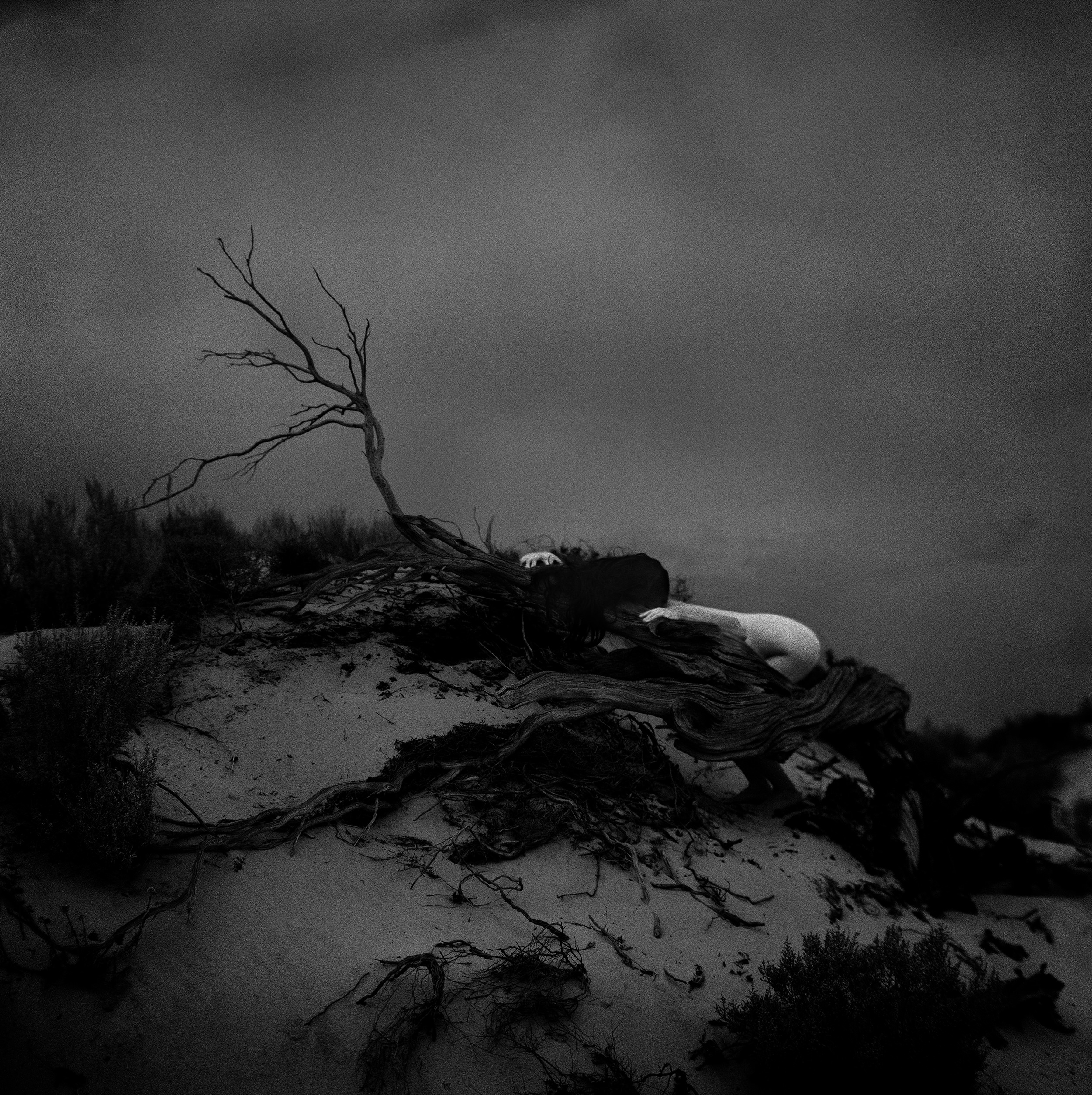Anthropocene: The Age of Humans
2020
2020
Depicting the female form in landscapes that are eerie and post-apocalyptic in their starkness - rough-hewn incarnations of the Garden of Eden - this series draws inspiration from biblical narratives of creation and the Fall of man (woman).
The marble skin of these figures, luminous in dark, uninhabited landscapes conjure images from myths and fairy-tales that allude to a state of innocence and wonder.
Yet while the Fall was characterised by torment and shame, a loss of grace, the presence of the women in these untamed landscapes has a dream-like ambiguity. Rather than being helpless, or in need of protection, the women offer a more expansive expression of the feminine: beauty combined with strength, nonchalance and indomitability.
In the anthropocene epoch, there is a profound disconnect with nature, yet these images situate humans within nature - cocooned, in sensuous repose and unfurling into a state of awareness with the possibility for communion with nature.
For this series, my muse and dear friend and I embarked on a five day road trip in January.
We packed her 4WD to the brim with props & bags of fabric from op shops,
and took off in search of utterly beautiful landscapes.
With bushfires raging all across the country, our options were extremely limited,
so based on a whim I decided to head towards the Murray-Sunset National Park,
about seven hours from Melbourne. After a few days in the small town of Sea Lake
we decided to abandon our original route and turn towards the more lush Grampian Ranges in search of water.
For “Anthropocene”, I used lace for the first time in my work.
I often source secondhand fabrics, but have been hesitant to use lace specifically,
perhaps it was too old fashioned and laden with inherent meaning,
but days before embarking on the five day road trip, I succumbed to my love for it.
For me, lace represents romanticism, the feminine, a single thread of delicate beauty
combined with the strength of many intertwining threads, and in many ways,
symbolises the way in which I aim to represent the female figure,
an honest beauty combined with strength.
Lace has often been symbolic of modesty and obedience,
of rites of passage, of fragility and chastity, but also debauchery.
I am drawn to the idea of playing with and challenging stereotypical notions of the feminine.
Hair is another fascination as a veil, a protective layer, magical and possibly dangerous,
often symbolically depicted with an ability to communicate social meaning;
associations of blonde hair with purity and dark hair with passion, historically hair has been a tool to measure sanity.
Unkempt hair as a symbol of chaos and immorality, unbridled, unhinged sexuality.
Hair for me also conjures up the dark and mysterious fairy tales we all grew up being shaped by,
women who needed a prince to rescue them, but also ancient legends of powerful queens and mysterious women
often forgotten by a history mostly written by men.
We packed her 4WD to the brim with props & bags of fabric from op shops,
and took off in search of utterly beautiful landscapes.
With bushfires raging all across the country, our options were extremely limited,
so based on a whim I decided to head towards the Murray-Sunset National Park,
about seven hours from Melbourne. After a few days in the small town of Sea Lake
we decided to abandon our original route and turn towards the more lush Grampian Ranges in search of water.
For “Anthropocene”, I used lace for the first time in my work.
I often source secondhand fabrics, but have been hesitant to use lace specifically,
perhaps it was too old fashioned and laden with inherent meaning,
but days before embarking on the five day road trip, I succumbed to my love for it.
For me, lace represents romanticism, the feminine, a single thread of delicate beauty
combined with the strength of many intertwining threads, and in many ways,
symbolises the way in which I aim to represent the female figure,
an honest beauty combined with strength.
Lace has often been symbolic of modesty and obedience,
of rites of passage, of fragility and chastity, but also debauchery.
I am drawn to the idea of playing with and challenging stereotypical notions of the feminine.
Hair is another fascination as a veil, a protective layer, magical and possibly dangerous,
often symbolically depicted with an ability to communicate social meaning;
associations of blonde hair with purity and dark hair with passion, historically hair has been a tool to measure sanity.
Unkempt hair as a symbol of chaos and immorality, unbridled, unhinged sexuality.
Hair for me also conjures up the dark and mysterious fairy tales we all grew up being shaped by,
women who needed a prince to rescue them, but also ancient legends of powerful queens and mysterious women
often forgotten by a history mostly written by men.




